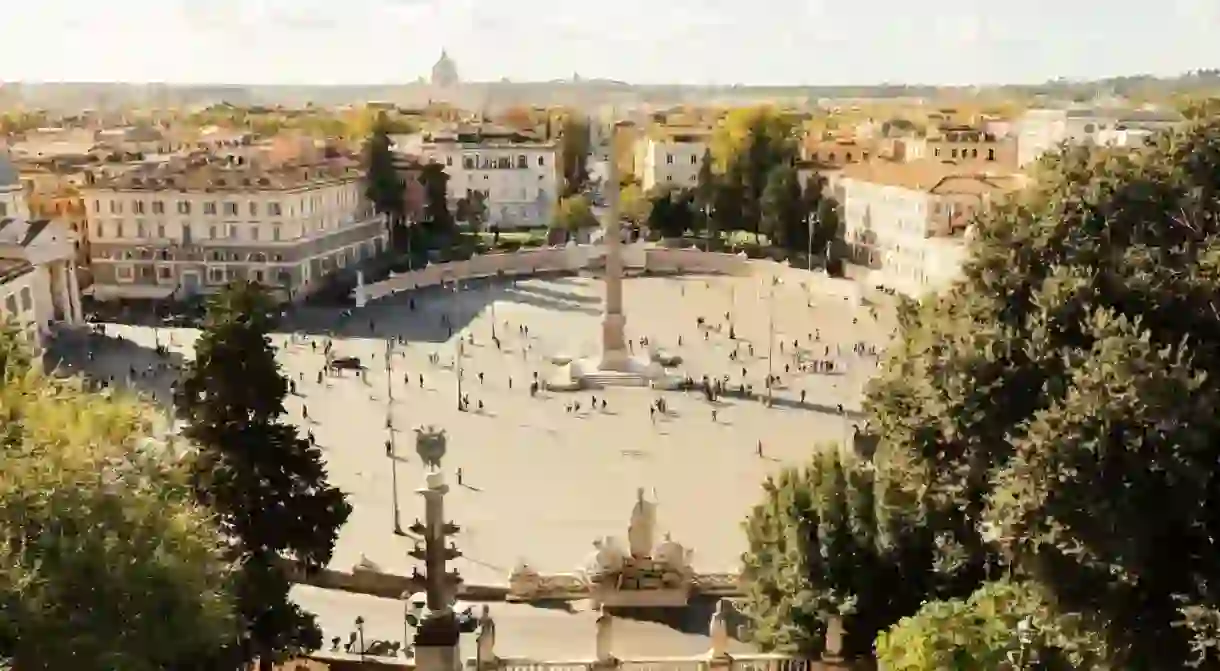How To Explore Rome's History in the Centro Storico

Rome is a city thousands of years in the making, and its intertwined layers of history can best be seen in the jumble of architectural styles on display in and around the historic centre. Get to know the Eternal City’s past through exploring these fascinating sites.

The mythological story of Romulus and Remus dates the founding of Rome back to 753 BC, but there is evidence of human settlement even earlier, making Rome one of the oldest continuously inhabited cities in Europe. The transformation from small, pastoral settlement to buzzing metropolis has taken thousands of years and encompassed many different historical eras along the way – from the rise and fall of the Roman Empire to the artistic Renaissance period. Today, evidence of the city’s history is on display for all to see – if you know what to look for, that is. Here’s where you can spot the most important moments from Rome’s past.
National Etruscan Museum
Museum

Before the Romans came the Etruscans, an ancient civilisation based principally in Tuscany. The Etruscans had a heavy influence on early Roman society and, at one point, even ruled over their neighbours. In 509 BC, the Romans defeated the last Etruscan king, Tarquin, and the Republic was born. The Etruscans were eventually assimilated into Roman society, but elements of their culture – such as temple architecture and the worshipping of multiple gods – had a lasting impact. The National Etruscan Museum in Villa Giulia houses artefacts from this era, including the terracotta Sarcophagus of the Spouses.
Roman Forum
Archaeological site, Ruins, Historical Landmark

Originally swampy marshland, the Roman Forum was drained in the 7th century BC by the Cloaca Maxima, one of the world’s earliest sewage systems. The first kings of Rome conducted political affairs at the site, but it was during the Republican period that it really developed into a bustling commercial, cultural, religious and political centre. Many of the structures that can be seen today were added at a later date, but the Temple of Saturn, which housed the city’s gold and silver reserves, and the Temple of Castor and Pollux were both built in Republican times.
Largo di Torre Argentina
Ruins

The death of Julius Caesar, on the Ides of March 44 BC, was one of the most pivotal moments of the Roman Republic. Caesar’s assassination at the hands of conspiring senators precipitated a civil war, which, in turn, lead to the formation of the imperial system – otherwise known as the Roman Empire. The site of the assassination, the Theatre of Pompey, was eventually abandoned and enveloped by new buildings – but in the 1920s, a small section was rediscovered during excavations of Largo Argentina, along with four Republican-era pagan temples.
Colosseum
Archaeological site

One of the best-preserved ancient monuments and the most recognisable symbol of Rome, the Colosseum was built between AD 70-80 and could hold up to 80,000 bloodthirsty spectators. Constructed during a period of relative peace that later became known as Pax Romana, the amphitheatre and the brutal gladiatorial spectacles it hosted were seen as a means of keeping the Roman populace appeased. Today, the marble façade of the Colosseum has long since been plundered, but the structure, with its imposing arches and impressive scale, remains as remarkable as ever.
Pantheon
Building, Church

Trajan Forum
Ruins, Museum

The Empire reached its peak under the reign of Trajan (98-117 AD) with England, Africa and Mesopotamia (now present-day Iraq, Syria and Turkey) all under Roman rule. As power grew, building projects became increasingly ambitious, and Trajan developed a new forum to reflect Rome’s thriving new status. The vast portico-lined piazza included a monumental victory column and was surrounded by markets and administrative offices. Today, visitors can see the ruins from street level on Via dei Fori Imperiali and gain a deeper understanding of its history by visiting the Imperial Forum Museum.
Basilica Papale di Santa Maria Maggiore, Rome
Church, Building

St. Peter's Basilica
Church

Piazza Navona
Church

Antico Caffè Greco
Bar, Coffee Shop, Italian
Il Vittoriano
Building

While 19th-century architecture in other Italian cities – namely Milan, Naples and Turin – is epitomised by lofty, glass-and-iron-roofed shopping galleries, this trend never quite made it to Rome. Instead, the Eternal City’s turn-of-the-century icon is the colossal Vittoriano that dominates Piazza Venezia. Also known as the Altar of the Fatherland, the monument celebrates the first king of a unified Italy and is a Neoclassical interpretation of classical Roman architecture.
Museum of the Ara Pacis
Museum

Unveiled in 2006, the Ara Pacis Museum was the first architectural project to be built in Rome’s centro storico since the Fascist era. Designed by American architect Richard Meier, the contemporary steel and glass structure sits in stark contrast to its historic surroundings – though the travertine decoration and triumphal style allude to the grandeur of ancient Rome. The museum houses the 2,000-year-old Ara Pacis, or Altar of Peace, which was commissioned to celebrate Emperor Augustus’ return to Rome after conquests in Spain and Gaul.













